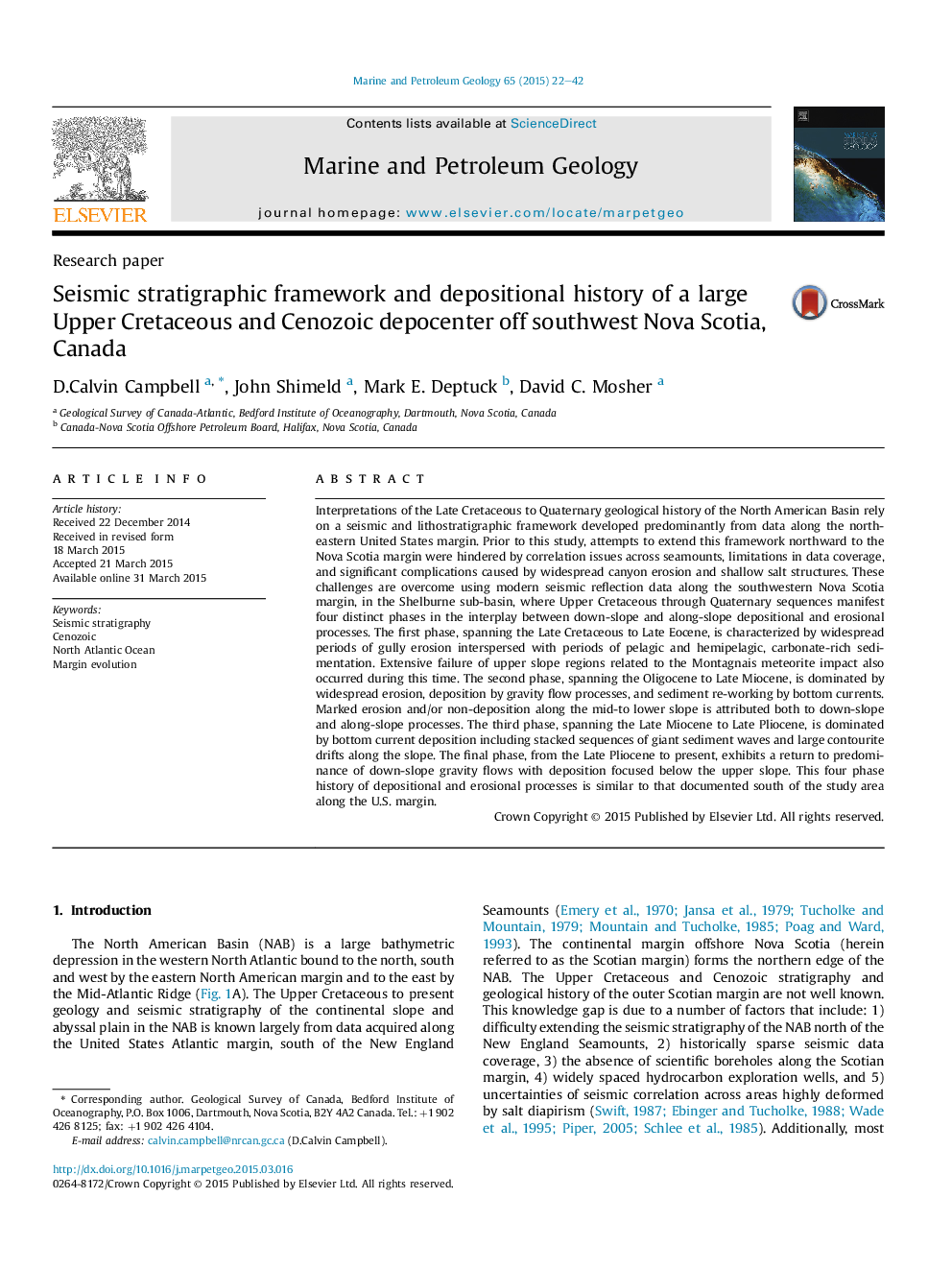| کد مقاله | کد نشریه | سال انتشار | مقاله انگلیسی | نسخه تمام متن |
|---|---|---|---|---|
| 6435041 | 1637160 | 2015 | 21 صفحه PDF | دانلود رایگان |
- The detailed seismic stratigraphy and evolution of a large deepwater depocenter is revealed.
- A multidisciplinary approach is used that applies 2D and 3D seismic geomorphology, litho- and biostratigraphy.
- A four stage stratigraphic framework for a broad portion of the margin of the North American Basin is presented.
- Similarities between the evolution of the U.S Atlantic and S.E. Canadian Atlantic margin are demonstrated.
Interpretations of the Late Cretaceous to Quaternary geological history of the North American Basin rely on a seismic and lithostratigraphic framework developed predominantly from data along the northeastern United States margin. Prior to this study, attempts to extend this framework northward to the Nova Scotia margin were hindered by correlation issues across seamounts, limitations in data coverage, and significant complications caused by widespread canyon erosion and shallow salt structures. These challenges are overcome using modern seismic reflection data along the southwestern Nova Scotia margin, in the Shelburne sub-basin, where Upper Cretaceous through Quaternary sequences manifest four distinct phases in the interplay between down-slope and along-slope depositional and erosional processes. The first phase, spanning the Late Cretaceous to Late Eocene, is characterized by widespread periods of gully erosion interspersed with periods of pelagic and hemipelagic, carbonate-rich sedimentation. Extensive failure of upper slope regions related to the Montagnais meteorite impact also occurred during this time. The second phase, spanning the Oligocene to Late Miocene, is dominated by widespread erosion, deposition by gravity flow processes, and sediment re-working by bottom currents. Marked erosion and/or non-deposition along the mid-to lower slope is attributed both to down-slope and along-slope processes. The third phase, spanning the Late Miocene to Late Pliocene, is dominated by bottom current deposition including stacked sequences of giant sediment waves and large contourite drifts along the slope. The final phase, from the Late Pliocene to present, exhibits a return to predominance of down-slope gravity flows with deposition focused below the upper slope. This four phase history of depositional and erosional processes is similar to that documented south of the study area along the U.S. margin.
Journal: Marine and Petroleum Geology - Volume 65, August 2015, Pages 22-42
